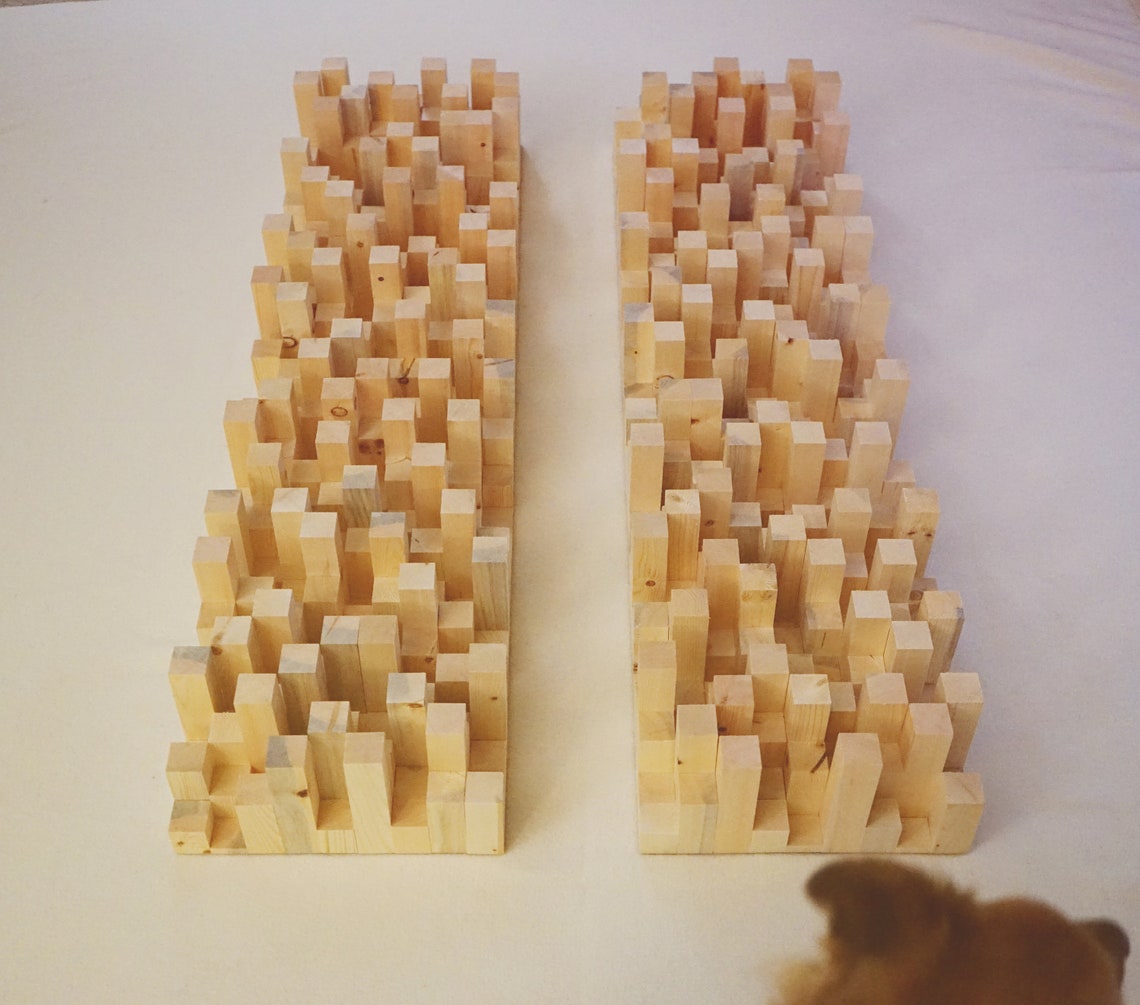I understand your frustration, dealing with room acoustics is not an easy task because one room is not the same as the other, and you can not translate the problems on a 1:1 scale from one room to another. There is no "one-fix" solution and you must get to know your particular listening room.
My approach is to take one step at a time. I use measurements of my room and try my best to recognize the most significant problems and deal with them one at a time, I don't try to solve them all in one go. It's a really cool way of doing it because you learn a lot in the process, you recognize a particular problem and you think about the best solution for that specific problem based on the specs of the absorber (or for this thread, the diffuser) and go for that. And when you re-measure the room response you see what that solution did and if you got close to what you aimed for and according to the result of that, you take the next step to get closer to the end goal you set from the beginning.
In short, don't try to solve everything in one go, take one step at a time and see where it goes.
You probably need both absorbers and diffusers to reach the goal, and the goal is to hear as much direct sound as possible from your speakers without overdoing things. By maximizing the direct sound from your speakers, the more you hear the recorded information. But(!), just to the point where the shortcomings of the somewhat simple stereo illusions are not revealed for what they really are. I hope that makes sense because we all have heard that listening to music in an anechoic chamber is not a very pleasant exercise.
I have watched a couple of highly educating videos on room acoustics on the Audioholics Youtube site with Anthony Grimani, an acoustic expert I have learned to trust. He has treated over three hundred rooms and has come to the conclusion that about 15% absorption and about 20% diffusion are the most common equation for most rooms. He likes to treat the rooms even by spreading out the absorbing material in the room to get the overall room reverberation times down, and after that, about 20% diffusion material.
It's pretty easy, just use mathematics and you know how much coverage is needed for every wall and ceiling when it comes to absorbing material and diffusion material. But just think of it as a "rule of thumb", measure, and re-measure step by step to know if you are moving in the right direction. The goal is to have an even reverberation time over the full spectrum.
The area under 100 Hz is the most problematic one and you will probably have a hard time dealing with that acoustically wise, and if that's hard to solve (because that is, in most cases, in need of some seriously big solutions), you can fall back using EQ as a last step to take care of that frequency area.
Personally, I have solved the reverberation times in my listening room to an accepted level of an average of about 350 milliseconds from around 100 Hz and up. The bass is a mess but doesn't get in the way of most music because the energy of most recordings is low under 50 Hz, and I take care of that with EQ adjustments at the moment (but I have a free corner in the room and I think about adding a serious bass trap there). My next step is most likely to add some diffusion to the room, maybe in the ceiling or to the wall behind my listening position. It's all a work in progress, but it's amazing how much better it gets with all the solutions and the "window" to the recordings gets clearer and more transparent. But at the same time, I must make sure I don't overdo anything, so a step-by-step approach is a way to do it for a non-acoustic expert like me.
@DjBonoBobo I am not an acoustician, but I do like to read. Since I lack personal experience, I will try to avoid unsupported assertions but instead provide references whenever possible. I think that your frustration comes down to both fundamental problems in how measurements are done and interpreted, as well as a failure in most discussions to simply identify individual preferences as the starting point for further exploration (e.g. https://www.audiosciencereview.com/...-of-lokki-bech-toole-et-al.27540/#post-950580). In a similar manner of different concertgoers having different preferences (clarity vs loud, reverberant sound vs timbre) and therefore arguing about what makes an optimal concert hall (or to make it a bit more complicated, whether LOC to improve the experience of more of the audience, like http://www.davidgriesinger.com/The_Physics_of_auditory_proximity_2.pptx), the discussion of what to do with reflections gets bogged down quickly without identifying or prioritizing preferences first.
Regarding measurements, at least in terms of absorption, you might be interested to read https://www.stereophile.com/content/nwaa-labs-measurement-beyond-atomic-level and http://nwaalabs.ipower.com/Files/NWAA Labs/AES PNW Old Problems, New Solutions, Architectural Acoustics in Flux2.ZIP, as well as Toole's second edition of Sound Reproduction regarding angles of incidence and fabric coverings. For diffusion, see the Stereophile artcle above and http://nwaalabs.ipower.com/Files/NWAA Labs/Diffusion, When phase and energy becomes more important than directivity in the perception of space 2017 NOLA.pdf. Compare what he says about binary amplitude diffusion devices in the latter with comments regarding localization in the former vs perception of the room opening up in the latter, for example, but also what he implies about QRD devices in the former.
In terms of small rooms, Cox and d'Antonio (founder of RPG) write in their book "Acoustic Absorbers and Diffusers," "How far away should a listener be positioned from the diffusers? The distance from listener to diffuser can be determined by considering the scattered and total field. First consider the scattered field, i.e. just the reflections from the diffuser. A diffuser requires a certain time or distance to form a wavefront. There is an analogy to loudspeakers that can be made here. A listener would not consider sitting 30 cm from a multi-way loudspeaker, because the listener would be in the near field of one of the drivers. At some distance from the loudspeaker, all individual high, mid- and low frequency waves from the individual drivers will combine to form a coherent wavefront. The same holds true for scattering surfaces. They also can be thought of in terms of near and far field, although the situation is a bit more complex than for loudspeakers...Consequently, listeners should be positioned as far from scattering surfaces as possible. Precedence has shown that it is best if the listener is at least three wavelengths away from diffusers. Since diffusers used in listening room applications have a lower frequency limit of roughly 300–500 Hz, this means a minimum distance of 3m is recommended."
Also with "Acoustics of Small Rooms," Kleiner and Tichy distinguish between small rooms used for music reproduction and small rooms used for voice and music practice with interesting distinctions in discussion. They discuss the use of diffusion more in the latter than the former.
Anyway, just my thoughts reading your post. I think it may be a bit more complicated than what I'm interpreting from @sarumbear.
Young-Ho
Thank you for your answers. Sadly, i do not have the time to respond properly, because it is a complicated topic (for me). I actually tried pretty hard to take step by step in the last years and also tried to document what i was experiening in my threads i mentioned in my earlier post.
Just one more thing at the moment: The quote @youngho posted "a minimum distance of 3m is recommended" is a good example for the conflicting information i meant: In my small room (3x5 m), only the back wall is further away than 3 meters from listening position. So if I follow this quote, it would mean from my understanding that it would only make sense there.
But @sarumbear wrote:
Isn't that a contradiction? Or what am I misunderstanding?In most small rooms absorption often creates more issues than it solves. Diffusion is a better solution. (...)
They are a much better choice than foam panels to stop a reflection from a wall -- much, much better.
Apologies if this question has been answered in this thread before, i have to catch up yet...






